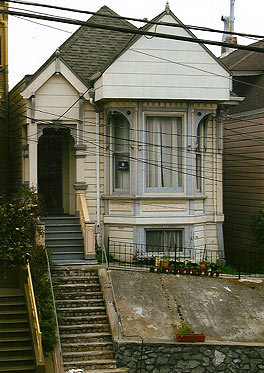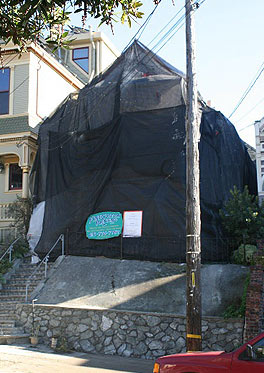
Containment is the first step in our process. During containment, we put up scaffolding and enclose a building's exterior in an envelope of plastic. This enclosure is essential to preventing lead contamination during stripping, scraping and sanding. Because they are older, virtually all the houses we work on have lead in the existing paint. The lead dust and chips created when we strip, scrape and sand are caught by the plastic enclosure and the netting hung below the scaffolding.
This enclosure also serves a secondary purpose: protection from cold air, fog or stormy weather, all of which effect paint's ability to adhere to wood, stucco or metal surfaces. In fact, our containment is effective enough to allow us to work on exteriors year round in any weather.
We work closely with clients to minimize the inconvenience of our containment and always provide safe access to garages and doors. We also reinforce the scaffolding after we install the plastic and netting so that it stays safely connected to the building even during high winds.

Any home constructed and/or painted before 1970 most likely has paint that contains lead.
Lead exposure can cause neurological damage, renal disease, cardiovascular illness and more and is particularly dangerous in children under the age of 7.
The EPA strictly regulates painters and other workers who may disturb lead while they work. Our containment and cleaning process closely adheres to all EPA regulations.
For more information on lead and home renovation, please see the Renovation section of the EPA's Lead in Paint, Dust and Soil web site.

A recent renovation project before scaffolding is
erected and nets and plastic are hung.
erected and nets and plastic are hung.

The same home with containment in place.

